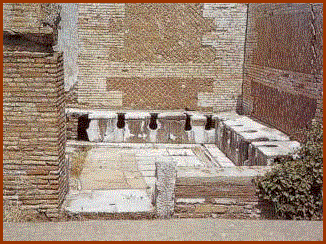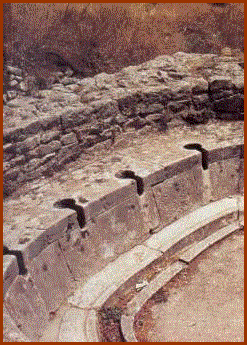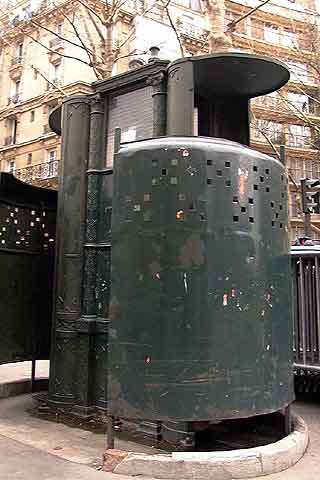The emperor Vespasien who always said “an emperor must die standing up” and who actually died in bed distributed through out Rome huge earthen ware urns for the public to use. He created a tax on urine known as “CHRYSAGYRE” payable every 4 years by all the heads of families prorate the number of people leaving under their roof and even for animals (dogs, donkeys workings animals) who obviously couldn’t use the urns.


As all big cities, Paris had to resolve the same problem as Vespasien.
It was decreed by the king that it was forbidden to satisfy natural needs, wrote Thevenot de Morande, who noted the initiative of Mr De Sartines, who about 1770 “had placed barrels of need at every street corners.
The count Claude Philipert de Rambuteau knew magistracy how to resolve the problem, named by Louis Philippe, prefect of the Seine in 1833, he decided to built the first Vespasiennes from 1841, on words they sprang up practically everywhere on the pavements of the capital, soon the public changed the name to “Rambuteau columns”.
Two years later, after an administrative count, on the 25th of April 1843, 478 were in existence.
It was during his deliberation on the 16th of march that the municipal council of Paris decided to progressively remove the Vespasienne replacing them with the creation underground lavatories.
The French word “Vespasienne” which had been created almost immediately after Rambuteau’s decision is found for the first time in 1834 in “newspaper for women.” "Journal des Femmes" It would disappear and be replaced by the “Sanisette”.
The patent for the Sanisette appeared in Paris for the first at the early 1980th , it shelters public toilets, and access is payable and automatically clean.
